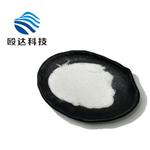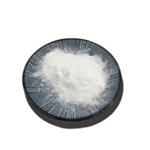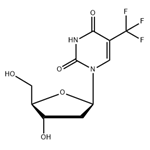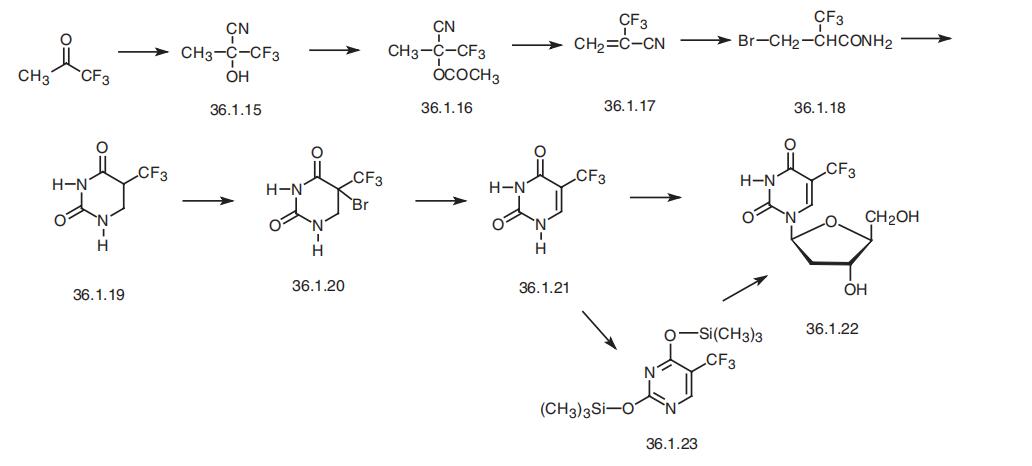- Trifluridine
-

- $0.00 / 1KG
-
2024-03-15
- CAS:70-00-8
- Min. Order: 1KG
- Purity: 99
- Supply Ability: 20 TONS
- Trifluridine
-

- $0.00 / 1KG
-
2023-11-27
- CAS:70-00-8
- Min. Order: 1KG
- Purity: 99%
- Supply Ability: 20 TONS
- Trifluridine
-

- $0.00 / 1kg
-
2022-09-30
- CAS:70-00-8
- Min. Order: 1kg
- Purity: 98%
- Supply Ability: 1Ton
Related articles - Trifluorothymidine/Trifluoridine
- Trifluorothymidine, also known as trifluoridine, is a fluorinated pyrimidine nucleoside analog of thymidine and related to ido....
- Apr 13,2022
|
| | Trifluridine Basic information |
| | Trifluridine Chemical Properties |
| Melting point | 190-193 °C (lit.) | | density | 1.4365 (estimate) | | refractive index | 50 ° (C=1, H2O) | | storage temp. | 2-8°C | | solubility | Soluble in DMSO (up to 25 mg/ml) or in Water (up to 14 mg/ml) | | form | solid | | pka | pKa 7.85 (Uncertain) | | color | Off-white | | Merck | 14,9687 | | Stability: | Stable for 1 year from date of purchase as supplied. Solutions in DMSO or distilled water may be stored at -20°C for up to 1 month. | | CAS DataBase Reference | 70-00-8(CAS DataBase Reference) |
| | Trifluridine Usage And Synthesis |
| Description | Trifluridine (trifluorothymidine, TFT), a fluorinated pyrimidine nucleoside, is an anti-herpesvirus agent and an antitumor antimetabolite agent. It is an analog of thymidine which inhibits thymidylate synthase possesses antiviral and anticancer activity. After phosphorylation by thymidine kinase, it is incorporated into DNA where it induces DNA-damage and interferes with repair enzymes. Enhances frame shift insertion and deletion in CRISPR genome editing in pluripotent stem cells. | | Chemical Properties | White to Off-White Solid | | Originator | Trifluorothymidine ,Mann,W. Germany,1975 | | Uses | Trifluridine is used as anti-herpesvirus antiviral agent in ophthalmie preparations. | | Definition | ChEBI: Trifluridine is a pyrimidine 2'-deoxyribonucleoside compound having 5-trifluoromethyluracil as the nucleobase. An antiviral drug used mainly in the treatment of primary keratoconjunctivitis and recurrent epithelial keratitis. It has a role as an antiviral drug, an antimetabolite, an EC 2.1.1.45 (thymidylate synthase) inhibitor and an antineoplastic agent. It is a nucleoside analogue, an organofluorine compound and a pyrimidine 2'-deoxyribonucleoside. | | Indications | Trifluridine (Viroptic) is a fluorinated pyrimidine nucleoside
that has in vitro activity against HSV-1 and HSV-
2, vaccinia, and to a lesser extent, some adenoviruses.
Activation of trifluridine requires its conversion to the
5 monophosphate form by cellular enzymes.Trifluridine
monophosphate inhibits the conversion of deoxyuridine
monophosphate (dUMP) to deoxythymidine
monophosphate (dTMP) by thymidylate synthetase. In
addition, it competes with deoxythymidine triphosphate
(dTTP) for incorporation by both viral and cellular
DNA polymerases. Trifluridine-resistant mutants have
been found to have alterations in thymidylate synthetase
specificity. | | Brand name | Viroptic (Monarch). | | Therapeutic Function | Antiviral (ophthalmic) | | General Description | Trifluridine, 5-trifluoromethyl-29-deoxyuridine (Viroptic),is a fluorinated pyrimidine nucleoside that demonstrates invitro inhibitory activity against HSV-1 and HSV-2, CMV,vaccinia, and some adenoviruses.Trifluridine possesses atrifluoromethyl group instead of an iodine atom at the 5-position of the pyrimidine ring.
synthetase, and the biologically generated triphosphatecompetitively inhibits thymidine triphosphate incorporationinto DNA by DNA polymerase. In addition, trifluridine inits triphosphate form is incorporated into viral and cellularDNA, creating fragile, poorly functioning DNA.Trifluridine is approved in the United States for the treatmentof primary keratoconjunctivitis and recurrent epithelialkeratitis caused by HSV types 1 and 2. Topical trifluridineshows some efficacy in patients with acyclovir-resistantHSV cutaneous infections. | | Biochem/physiol Actions | Trifluorothymidine is a thymidine analog and is light sensitive. TFT serves as a thymidine kinase substrate to study enzyme specificity and kinetics. Incorporation of phosphorylated TFT into DNA induces damage, making it useful for DNA repair studies. TFT may also be used in the inhibition of thymidylate synthase and in screening mutant thymidine kinase gene.. It elicits antitumor activity in gastrointestinal (GI) cancers and has therapeutic potential to treat herpetic keratitis. | | Mechanism of action | Trifluorothymidine is a fluorinated pyridine nucleoside structurally related to idoxuridine. It has been
approved by the U.S. FDA and is a potent, specific inhibitor of replication of HSV-1 in vitro. Its
mechanism of action is similar to that of idoxuridine. Like other antiherpes drugs, it is first
phos-phorylated by thymidine kinase to mono-, di-, and triphosphate forms, which are then incorporated
into viral DNA in place of thymidine to stop the formation of late virus mRNA and subsequent synthesis of
the virion proteins. | | Pharmacokinetics | Trifluorothymidine is a synthetic halogenated pyrimidine nucleoside, first synthesized as an antitumor agent. It inhibits enzymes of the DNA pathway and is incorporated into both cellular and progeny viral DNA, causing faulty transcription of late messenger RNA and the production of incompetent virion protein. It does not require a viral thymidine kinase for monophosphorylation and is far less selective and more toxic than other analogs. It is active against HSV-1 and HSV-2, vaccinia virus, CMV and possibly adenovirus. Trifluorothymidine, when given IV, shows a plasma half-life of 18 minutes and is excreted in the urine either unchanged or as the inactive metabolite 5-carboxyuracil. When applied as a 1% ophthalmic solution, it rapidly enters the aqueous humor of HSV-infected rabbits’ eyes but is cleared within 60–90 min. | | Side effects | The most frequent adverse reactions to trifluridine administration
are transient burning or stinging and
palpebral edema. Other adverse reactions include superficial
punctate keratopathy, epithelial keratopathy,
hypersensitivity, stromal edema, irritation, keratitis
sicca, hyperemia, and increased intraocular pressure.
Trifluridine is mutagenic in vitro and carcinogenic
and teratogenic when administered subcutaneously to
animals. Topical trifluridine was not teratogenic in animal
studies. Because it is applied topically in humans,
the likelihood of systemic effects is low. | | Synthesis | Trifluridine, 5-trifluoromethyl-1-(2-deoxyribofuranosyl)pyrimidin-2,
4-(1H.3H)-dione (36.1.22), is synthesized from 5-trifluoromethyluracil. This is synthesized
by the following scheme. It begins with trifluoroacetone, from which the oxynitrile (36.1.16)
is synthesized. Acetylation of this product gives the corresponding trifluoroacetate (36.1.16).
Pyrrolysis of this compound gives trifluoromethylacrylonitrile (36.1.17). Adding to this dry
hydrogen bromide in methanol solution in a process of which methanolysis of the nitrile
group takes place the bromide 36.1.19 is obtained, which upon acidic hydrolysis undergoes
heterocyclization to the dihydropyrimidine 36.1.20. Brominating of the obtained dihydropy�rimidine with molecular bromine and subsequent dehydrobromination of the resulting prod�uct 36.1.21 on heating in dimethylformamide gives 5-trifluoromethyluracil (36.1.22). This is
reacted with 2-deoxy-D-ribos-1-phosphate using the nucleoside phosphorylase enzyme, or
by treating it with hyxamethyldisylazane and then with trichloromethylsilane to make 2,4-
trimethylsilyloxy-5-trifluoromethyl pyrimidine (36.1.23).
Hexamethyldisilazane, which
itself does not form trimethylsilyl ethers, is used because using a combination of two
reagents leads to optimal yield of trimethylsilyl ethers. Reacting the resulting pyrimidine derivative with 3,5-bis-(4-nitrobenzoate)-2-deoxyribofuranosyl chloride in the presence of
mercury (II) acetate makes the corresponding ditrimethylsilyloxy nucleoside, which when
treated with an aqueous solution of potassium iodide to remove the protecting groups. The
resulting product undergoes preliminary purification by chromatography, and then is treated
with a methanol solution of diisopropylamine to remove the 4-nitrobenzoyl protection from
the furanosyl part, giving the desired trifluridine.
| | Veterinary Drugs and Treatments | Trifluridine (trifluorothymidine; Viroptic?) is a pyrimidine nucleoside
analog. It is structurally related to 2-deoxythymidine, the natural
precursor of DNA synthesis. Trifluridine is poorly absorbed by
the cornea and is virostatic. Viroptic? interrupts viral replication
by substituting “nonsense” pyrimidine analogues. For this reason, a
competent surface immunity is necessary to resolve ocular disease,
with or without antiviral therapy. A recent in vitro study in which
several strains of feline herpes virus were collected from the United
States and were used to infect kidney epithelial cells showed that trifluridine
was more effective at lower concentrations compared with
several other agents. For this reason, trifluridine was the first choice
drug employed in the treatment of feline herpes virus ocular disease
for many years. Because of the topical toxicity associated with
use of trifluridine in cats, its popularity has diminished greatly. In
many milder cases, the irritation associated with topical trifluridine
is more intense then the inflammation induced by viral infection.
Antiviral agents have also been used in the treatment of superficial
punctate keratitis in the horse, thought to be associated with equine
herpes virus-2 (EHV-2) infection of the cornea. | | References | 1) Bijnsdorp et al. (2010), Differential activation of cell death and autophagy results in an increased cytotoxic potential for trifluorothymidine compared to 5-fluorouracil in colon cancer cells; Int. J. Cancer, 126 2457
2) Temmink et al. (2010), Trifluorothymidine resistance is associated with decreased thymidine kinase and equilibrative nucleoside transporter expression or increased secretory phospholipase A2; Mol. Cancer Ther., 9 1047
3) Suzuki et al. (2011), Mode of action of trifluorothymidine (TFT) against DNA replication and repair enzymes; Int. J. Oncol., 39 263 4) Yu et al. (2015), Small molecules enhance CRISPR genome editing in pluripotent stem cells; Cell Stem Cell, 16 142 |
| | Trifluridine Preparation Products And Raw materials |
|